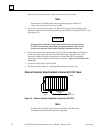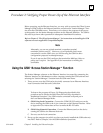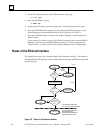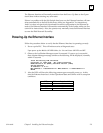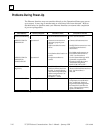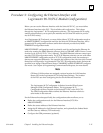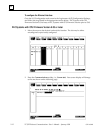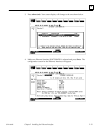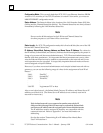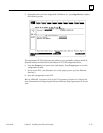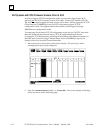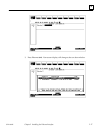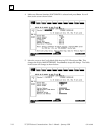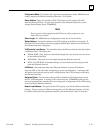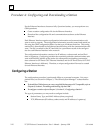
2
2-14 TCP/IP Ethernet Communications User’s Manual – January 1996
GFK-1004B
Configuration Mode: This currently defaults to TCP/IP. If your Ethernet Interface PROM
version is 1.15 or earlier, or if its TCP/IP software is version 1.28 or earlier, you must use
MMS-ETHERNET configuration mode.
Status Address: The Status Address is the location of the LAN Interface Status (LIS) bits
(16 bits) and the Channel Status bits (64 bits). The Channel Status bits are always located
immediately following the LAN Interface Status bits.
Note
Do not use the 80 bits assigned to the LIS bits and Channel Status bits
for other purposes or your data will be overwritten.
Status Length: For TCP/TP configuration mode, this is fixed at 80 bits (the sum of the LIS
bits and the Channel Status bits).
IP Address, Subnet Mask, Gateway Address, and Name Server IP Address: The values for
the IP Address, Subnet Mask, and Gateway Address should be assigned by the person in
charge of your network (the network administrator). TCP/IP network administrators are
familiar with these parameters. It is important that these parameters are correct, other-
wise the Ethernet Interface may be unable to communicate on the network and/or net-
work operation may be corrupted. It is especially important that each node on the net-
work is assigned a unique IP address.
However, if you have no network administrator and a simple isolated network with no
gateways, you can use the following range of values for the assignment of local IP ad-
dresses:
3.0.0.1 First PLC
3.0.0.2 Second PLC
3.0.0.3 Third PLC
..
..
..
3.0.0.255 Logicmaster TCP or host
Also, on an isolated network, the Subnet Mask, Gateway IP address, and Name Server IP
address can all be 0.0.0.0. (The Name Server IP address is not currently used and is
reserved for future use.)
Note
If the isolated network is ever connected to another network, the IP
addresses 3.0.0.1 through 3.0.0.255 must not be used and the Subnet Mask
and Gateway IP address must be assigned by the Network Administrator.
The IP addresses must be assigned so that they are compatible with the
connected network. Refer to Appendix C for more information on
addressing.
See also the section “Determining If an IP Address Has Already Been
Used” in Procedure 4.



